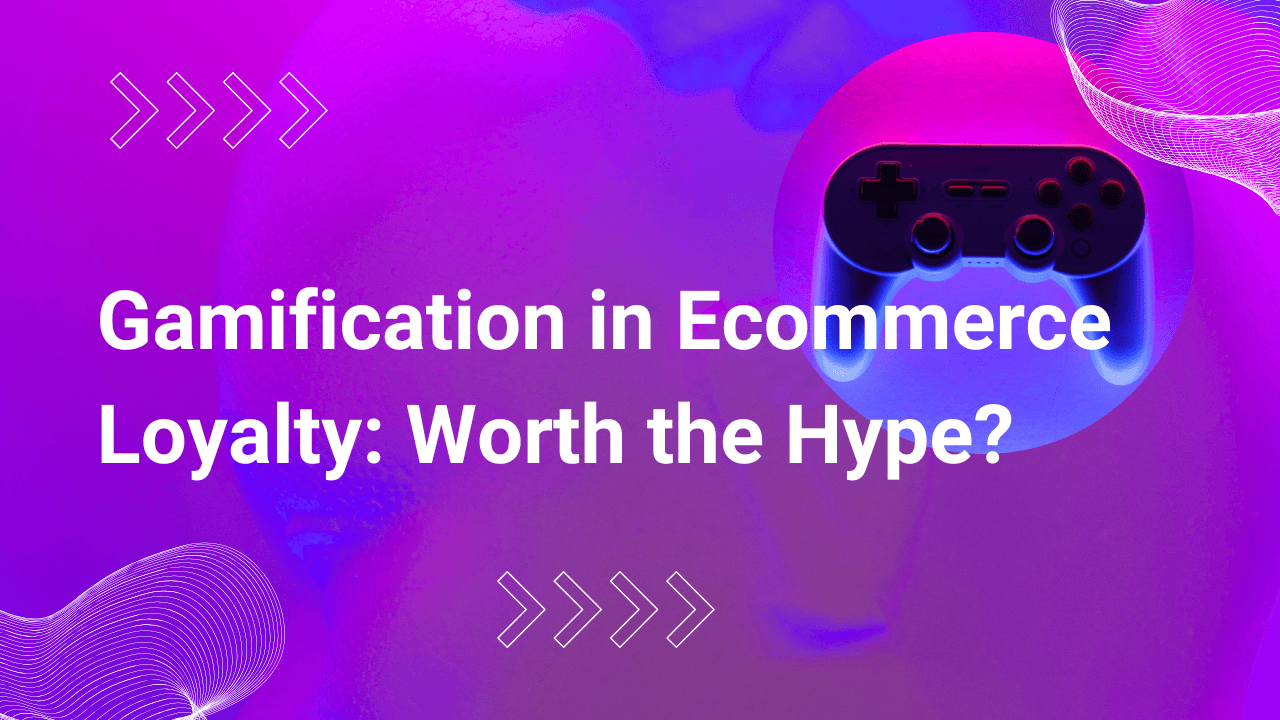Gamification in Ecommerce Loyalty: Worth the Hype?

Gamification in Ecommerce Loyalty: Worth the Hype?
In a world where every ecommerce brand is fighting for attention, traditional loyalty programs no longer cut it. Flat discounts and point systems have become expected—and frankly, boring. Customers today want more than rewards. They want experiences. That’s where gamification comes into play. By turning loyalty into a fun, interactive journey, gamification helps brands build lasting emotional connections with customers. But is it truly effective, or just another buzzword? Let’s explore.
What Is Gamification in Ecommerce Loyalty?
Gamification refers to the integration of game mechanics into non-game environments. In ecommerce loyalty, it means enhancing customer engagement through elements like levels, badges, challenges, progress bars, and reward wheels. Instead of simply earning points for purchases, customers can unlock achievements, rise through tiers, or participate in missions. This transforms the loyalty experience from a static, transactional model into a dynamic journey that encourages ongoing interaction with your brand.
Why Does Gamification Work?
Gamification works because it taps into the basic psychological drivers that motivate human behavior. People are naturally drawn to achievement, progress, and reward. Seeing a progress bar move, earning a badge, or unlocking a new level activates the brain's reward system, creating a sense of accomplishment. It also builds habits—customers come back not just to shop, but to maintain their streaks or complete challenges. This kind of emotional engagement is far more powerful than a 10% discount code.
The Business Case: Benefits of Gamified Loyalty
Gamification isn’t just fun—it delivers real business value. First, it increases repeat purchases. Customers who are actively working toward a reward or next tier are more likely to return and complete that journey. Second, it boosts Customer Lifetime Value (CLTV) by encouraging more frequent and larger transactions. Third, it enhances post-purchase engagement. Gamified elements like missions or spin-to-win games bring customers back to your platform even after buying. It also helps collect first-party behavioral data, which you can use to personalize experiences and target offers more effectively. Finally, by making the experience enjoyable, gamification fosters emotional loyalty—the kind that leads to advocacy and word-of-mouth.
Common Mistakes to Avoid
Despite its potential, gamification can easily fail if executed poorly. One common mistake is overcomplicating the experience. If customers don’t understand how to earn rewards or what benefits they get, they’ll lose interest. Another issue is offering low-value incentives. A spin wheel that offers 5% off isn't exciting enough to drive action. Many brands also fail to personalize challenges and rewards, sending the same experience to every customer regardless of behavior or stage in the journey. And if the gamified experience is not intuitive or mobile-friendly, it becomes a barrier rather than a hook. Gamification requires ongoing iteration—stale experiences lose impact fast.
Real-World Examples of Gamified Loyalty
Some of the most successful brands in ecommerce have already embraced gamification to great effect. Sephora’s Beauty Insider program uses tier-based rewards, early access perks, and exclusive experiences to keep customers engaged. Nike’s Run Club gamifies fitness with progress tracking and badges, fostering brand engagement beyond just purchases. Starbucks Rewards features stars, surprise games, and challenges that nudge customers to visit more frequently. These examples show that gamification can work across different verticals—from beauty to fitness to F&B—when it aligns with customer behavior and brand values.
Is Gamification Right for Your Ecommerce Brand?
Gamification works best in industries where customers buy frequently and engage with brands online. If you're in verticals like fashion, beauty, wellness, or FMCG, gamified loyalty can significantly improve retention and brand love. Even if you sell high-ticket or low-frequency products, gamification can still support your goals by driving engagement through referrals, content interaction, or post-purchase campaigns. The key is to understand your customer journey and design gamified touchpoints that feel natural and valuable rather than forced or gimmicky.
Pro Tips to Get Started with Gamified Loyalty
Getting started with gamification doesn’t have to be complex. Start simple—add a progress bar that shows how close customers are to their next reward. Introduce limited-time challenges to create urgency. Celebrate small wins like “first purchase” or “review submitted” with badges or instant perks. Encourage social sharing to amplify reach. Most importantly, continuously test and iterate. Track what users respond to and refine your approach. The goal isn’t just to add bells and whistles—but to enhance the customer experience in a meaningful way.
Final Verdict: Is It Worth the Hype?
In short—yes. Gamification, when thoughtfully designed, delivers much more than entertainment. It boosts engagement, strengthens loyalty, increases customer lifetime value, and makes your brand more memorable. In a retention-driven market, experience is the new differentiator—and gamified loyalty is one of the most effective tools to deliver it. It’s no longer a question of “should we gamify?”—but rather, “how soon can we start?”